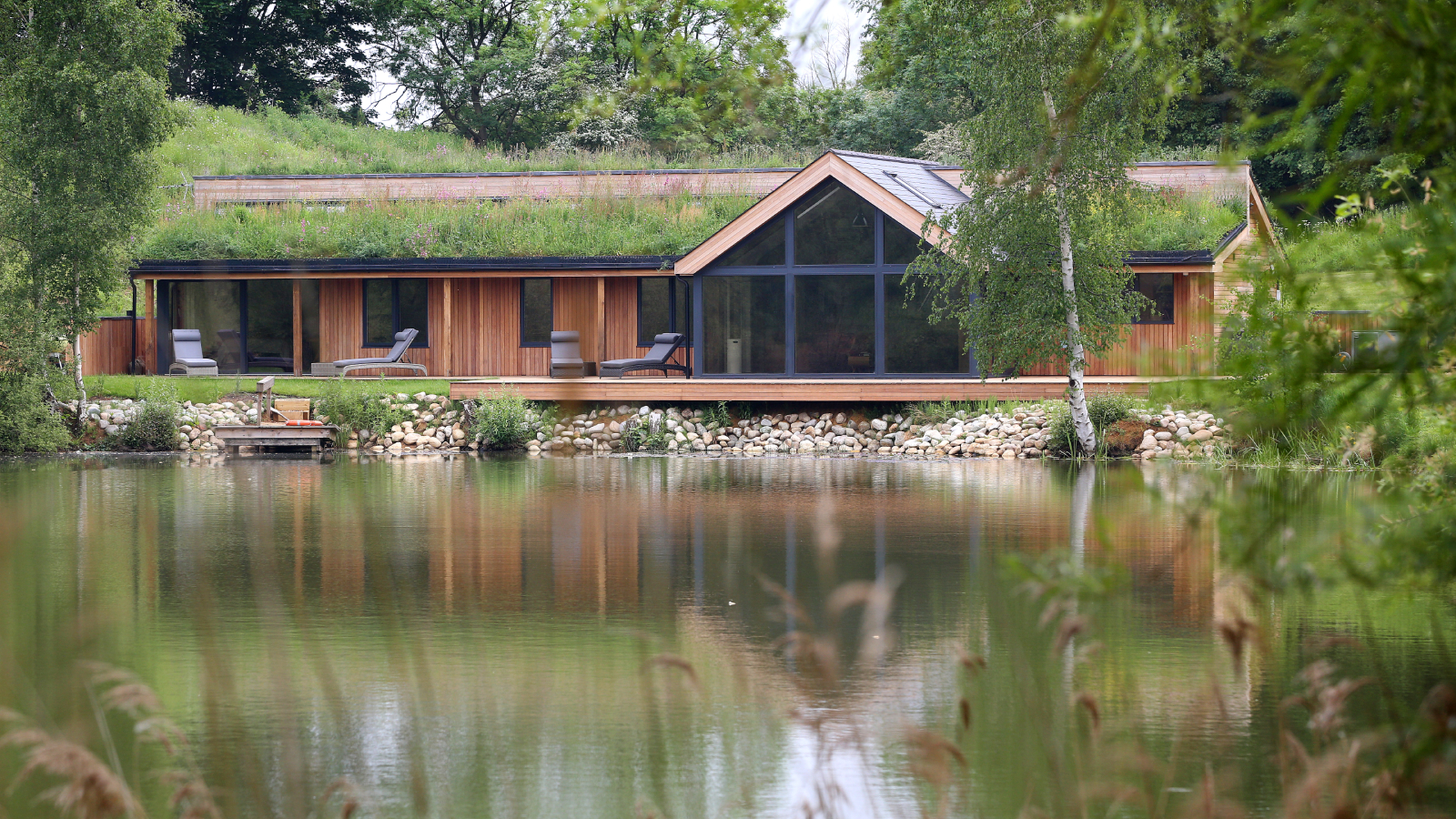Concrete vs Clay Roof Tiles: Which is Right For You?
It's the big debate: concrete vs clay roof tiles. We take a look at the pros and cons of each, including costs, durability and appearance.
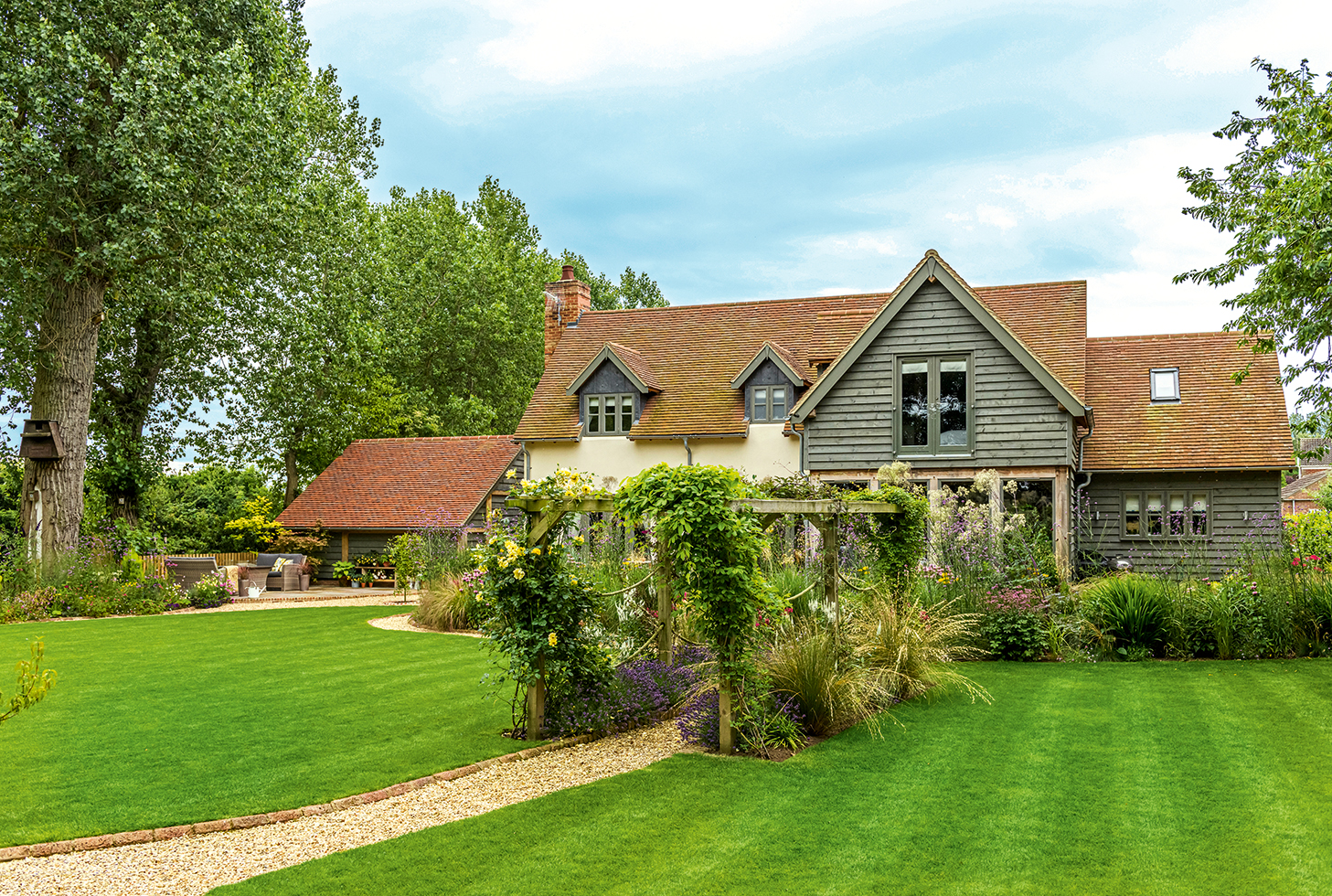
Concrete vs clay roof tiles — it is an issue often on the minds of those self building, extending or renovating. And with the question of what type of roof tile you use needing to be addressed early on in your project, the pressure is on to make a decision. .
There are many types of roof coverings, but for most people the choice usually comes down to concrete vs clay roof tiles.
The decision is often a result of budget, the style of the house, the local area and planning stipulations. But there are other points to consider too, such as how long you plan on staying in the house and the overall style you are aiming for.
Here we run through the pros and cons of clay and concrete products
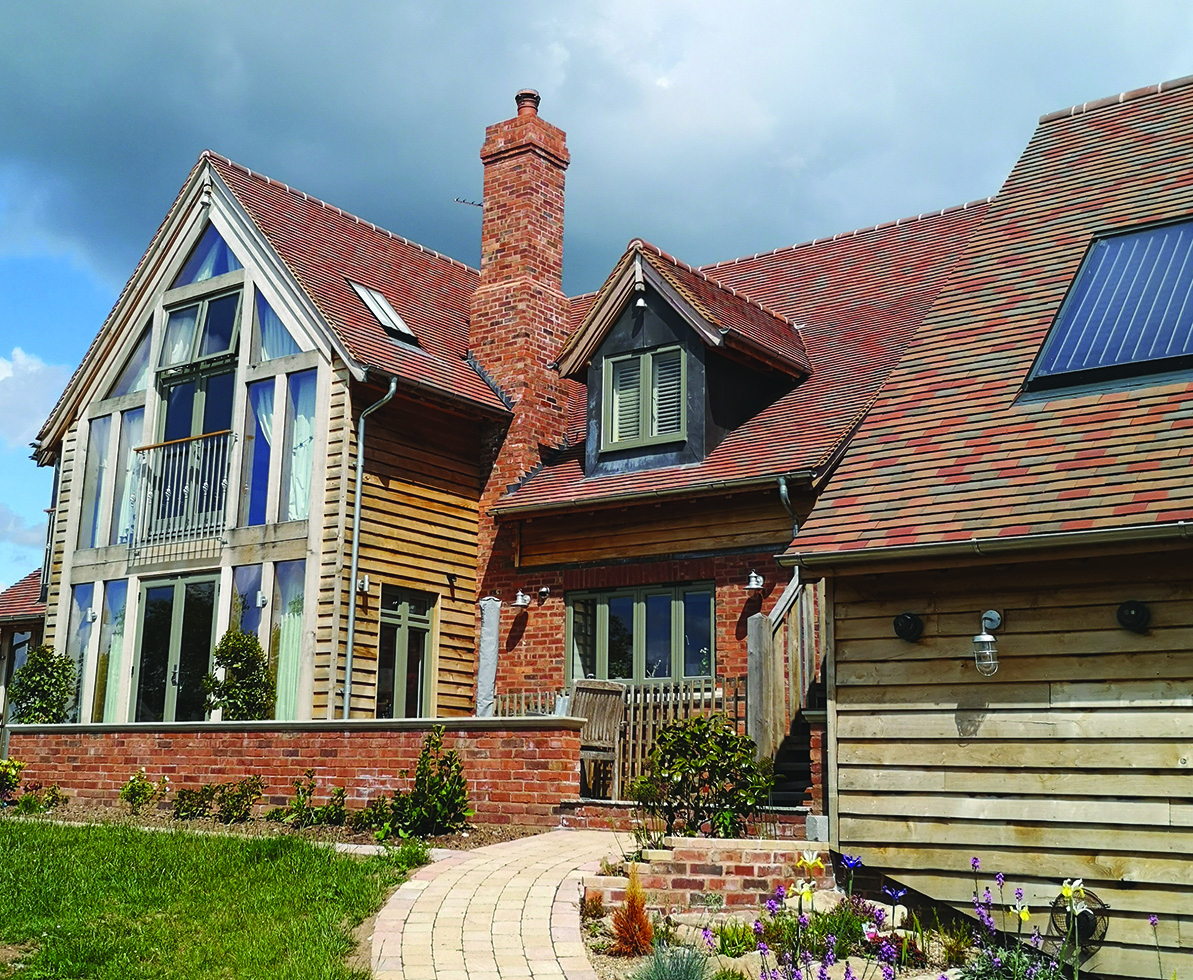
Concrete Vs Clay Roof Tile Prices
Are Concrete Roof Tiles Cheaper Than Clay?
The main reason people choose concrete roof tiles over clay lies in their affordability. The more time-consuming manufacturing process of clay tiles is the main culprit for this.
Concrete tile prices vary depending on the type of tile you opt for. For example, interlocking concrete tiles are cheaper than plain concrete tiles, with prices as low as 34p per tile (excluding VAT).
You should bear in mind, of course, that you will also need to factor in costs for fixings and labour and, when working out how many tiles you will need, don't forget wastage.
Bring your dream home to life with expert advice, how to guides and design inspiration. Sign up for our newsletter and get two free tickets to a Homebuilding & Renovating Show near you.
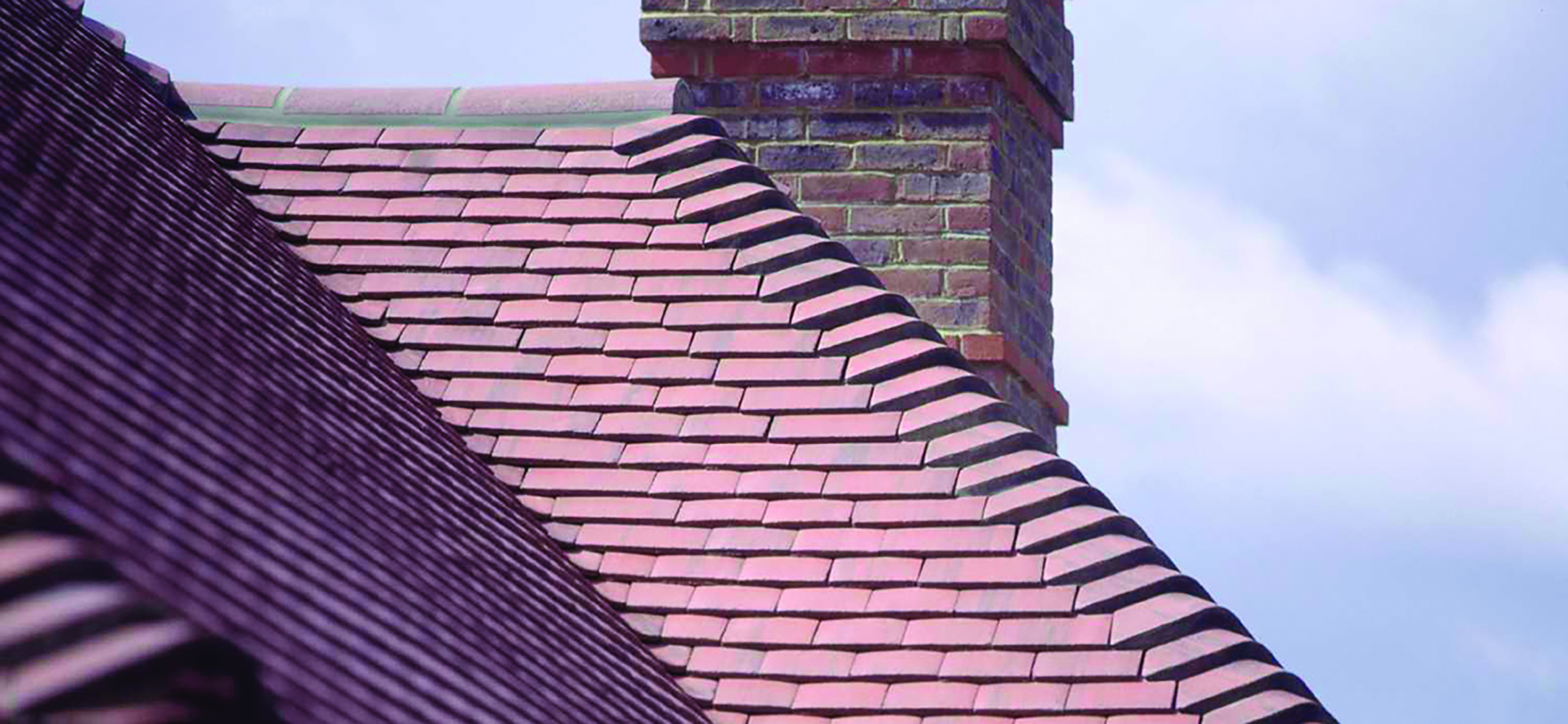
Within the range of clay roof tiles available, there are different price options. For example, handmade clay tiles can cost up to 50% more than machine-made clay tiles. Also, a machine-made clay tile such as Marley’s Acme Single Camber clay plain tile costs just a fraction more than a concrete equivalent.
“Clay tiles can vary in price but are roughly 20%-30% higher than concrete, but it’s important to remember that all the remaining roofing costs are the same whether you use clay or concrete, so the actual saving on the whole roof is considerably less than the 20%,” says Dave Sherry, sales manager of Dreadnought Tiles. “Concrete is also heavier than clay and may require a different structural arrangement to support the heavier load, which could add to the cost of the roof.
“While concrete tiles are less expensive than clay, there is, increasingly, a greater variety of clay roof tiles for the self builder to choose from and greater opportunity to find a solution within budget.”
Prices for machine-made clay tiles are, on average, from around £405 per 1,000, while handcrafted tiles (made by machine, but designed to simulate the appearance of a handmade product) start at £500 per 1,000. Handmade clay tiles tend to start at around £772 per 1,000.
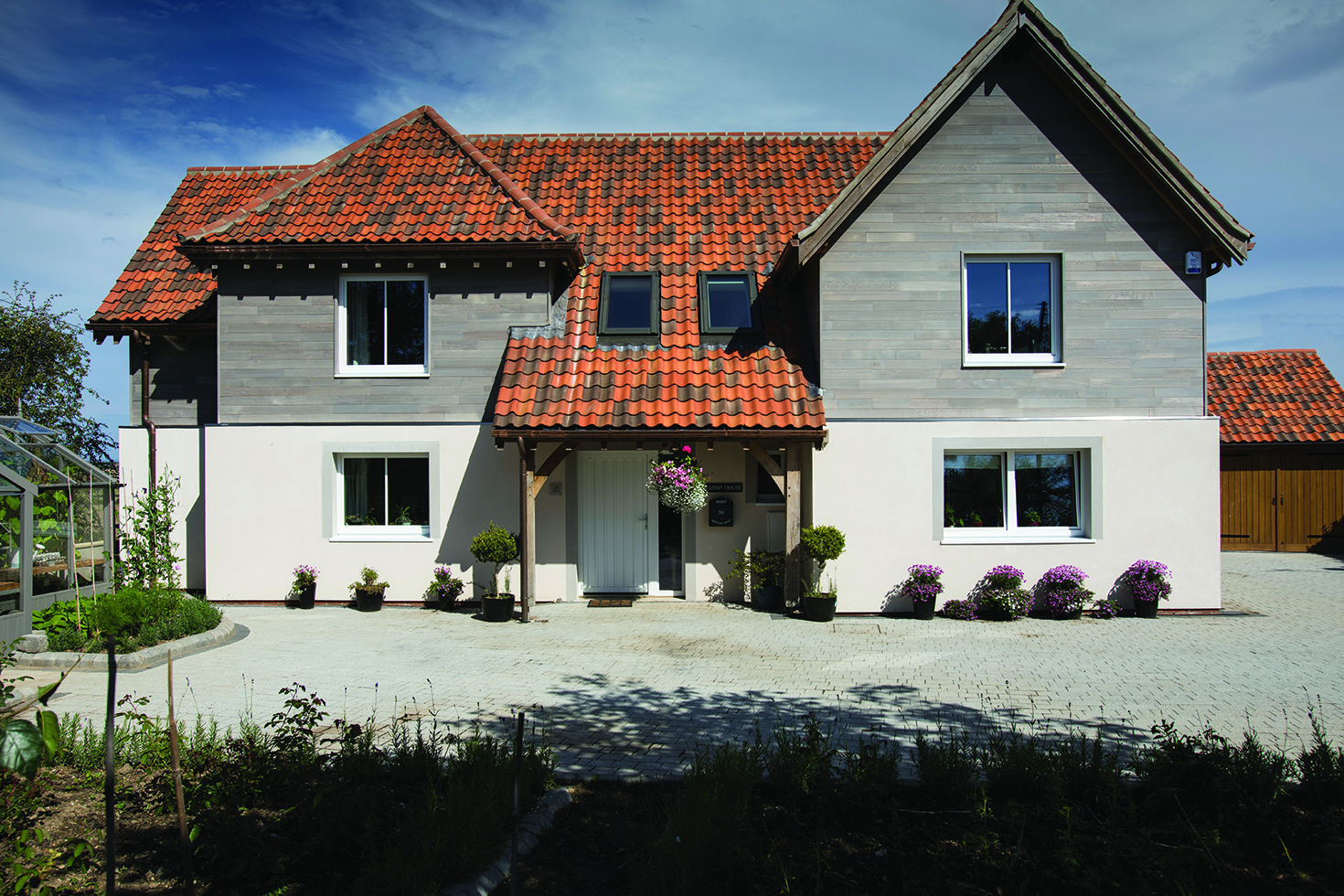
What's the Difference in Appearance Between Concrete vs Clay Roof Tiles?
How can you Tell the Difference Between Concrete vs. Clay Roof Tiles?
Yes, concrete tiles may well win in the price stakes, but clay roof tiles possess a charm and character that is difficult to replicate.
That said, these days there are some really convincing clay replicas (not to mention slate lookalikes) and, in the case of contemporary homes, where a traditional, rustic aesthetic is not perhaps integral to the design, concrete is a good option.
The main differences become more obvious with age. The natural properties of clay allow for an appearance that stands the test of time with improved colour stability. With concrete products, although most are now through-coloured, the finished aesthetic is achieved with a coating and this may diminish over time.
“The case for clay tiles over concrete is largely an aesthetic one,” says Dave Sherry. “A natural clay roof delivers a character and richness that will last for the lifetime of the tiles, even mellowing and improving over time, while a concrete roof will tend to fade over the years.
It is true that achieving the subtle imperfections and varieties in texture, colour and size is much harder with concrete.
How Durable are Concrete Roof Tiles vs. Clay Tiles?
Do Clay Roof Tiles Last Longer Than Concrete?
The appearance of concrete roof tiles might not withstand the test of time as well as clay, but their performance typically can.
Manufacturers of both clay and concrete tiles tend to offer warranties of at least 30 years, although both can be expected to last at least double this time. It is more likely that the underlay will need replacing well before the tiles. The location of the roof and how well it is maintained affects its longevity in both cases.
Concrete roof tiles absorb more water than clay, meaning they may be prone to staining or mildew. Clay, on the other hand, may crack in extremely cold weather. However, the British climate does not often experience such wildly extreme weather conditions for these factors to be a huge issue when it comes to making your decision.
Keeping the roof clean, free of moss and replacing cracked, missing or damaged tiles quickly will extend the life of the roof.
Do Clay or Concrete Roof Tiles Require More Maintenance?
Due to their location, roof tiles need to be able to pretty much look after themselves and thankfully neither clay nor concrete roof tiles require much in the way of maintenance.
Areas of roof that are likely to be regularly exposed to moisture might, over time, grow moss or lichen (on clay perhaps more so than concrete). Ensuring this is removed will prevent damage.
It’s worth noting that concrete tiles can be prone to efflorescence. Efflorescence, or ‘lime bloom’, often appears as white patches or a lightening in colour and can be confused with colour fading. However, according to the experts at Marley, this efflorescence is a result of the reaction between cement and water and is caused by weather conditions.
Generally, this occurs early on in the life of the tiles and will be removed by rainwater over time, usually within six to 12 months.
Pros and Cons
Concrete vs. Clay: Which Roof Tiles Are Best?
When it comes to making your final decision there are a couple of important factors to bear in mind. Ask yourself how long you plan on staying in the property. Those building a forever home should seriously consider paying the extra for clay roof tiles. However, if you are looking to make a quick profit before moving on, a concrete tile makes sense. Opt for the best you can afford to ensure maximum profit.
Those renovating a character property or aiming to create a matching extension to a traditional house really need to be looking at clay tiles. Basically, if premium aesthetics are of upmost importance to you then clay tiles are the way forward.
If, on the other hand, you are building from scratch, are trying to stick to a budget and are happy for a more uniform roof covering that can quickly be fitted, a concrete roof tile may well be the best option, offering you a durable, long-lasting covering that is available in a really good range of colours and profiles.
Advantages of Clay Roof Tiles
- A natural, rustic appearance that will improve over time with colour that won’t fade
- Range of sizes to suit all roof types and details
- Range of price options, with machine-made at the cheaper end and handmade at the top
- Long lifespan — some clay tiled roofs laid over a hundred years ago are still going strong
- Low maintenance
- Perfect for traditional builds and renovations
Disadvantages of Clay Roof Tiles
- Can crack in extremely cold weather
- Expensive compared to other tile types
- Smaller so more time-consuming to lay
Advantages of Concrete Roof Tiles
- A cost-effective roof covering
- Available in a huge range of colours
- Large format tiles mean fast installation times
- Long warranty periods
- A uniform appearance suited to modern homes
- Low maintenance
Disadvantages of Concrete Roof Tiles
- Heavier than clay so the roof may need support
- Colour fades over time
Natasha was Homebuilding & Renovating’s Associate Content Editor and was a member of the Homebuilding team for over two decades. In her role on Homebuilding & Renovating she imparted her knowledge on a wide range of renovation topics, from window condensation to renovating bathrooms, to removing walls and adding an extension. She continues to write for Homebuilding on these topics, and more. An experienced journalist and renovation expert, she also writes for a number of other homes titles, including Homes & Gardens and Ideal Homes. Over the years Natasha has renovated and carried out a side extension to a Victorian terrace. She is currently living in the rural Edwardian cottage she renovated and extended on a largely DIY basis, living on site for the duration of the project.

